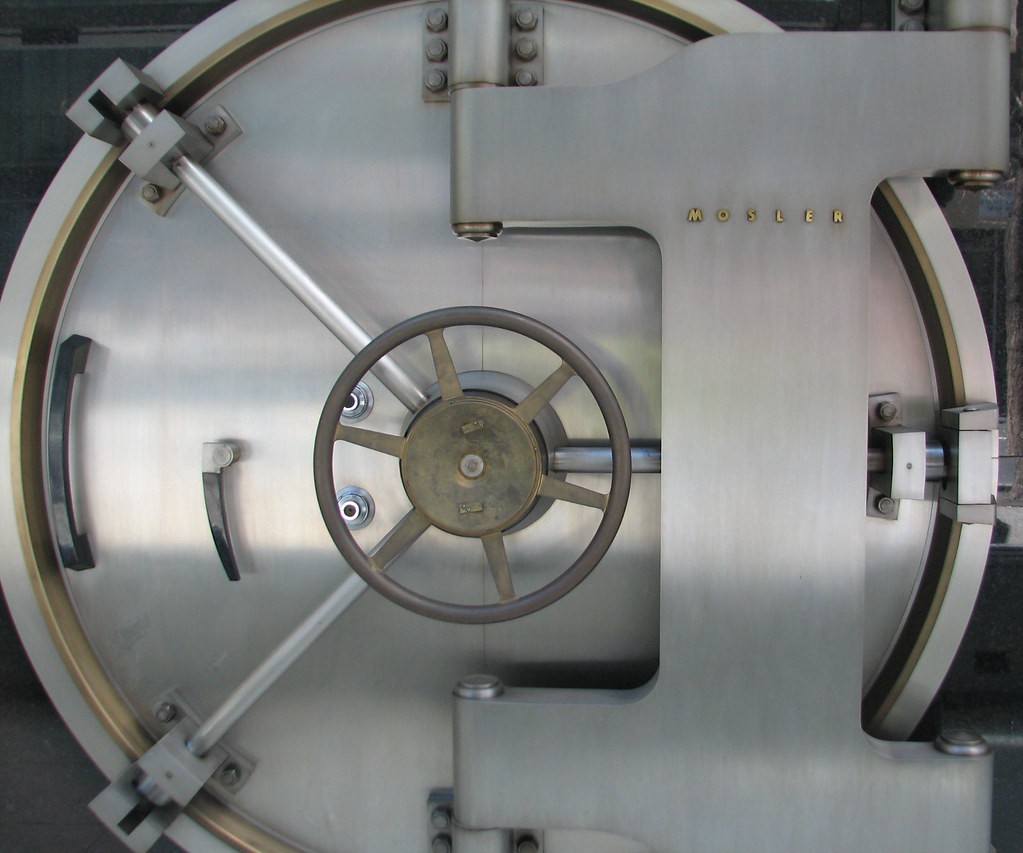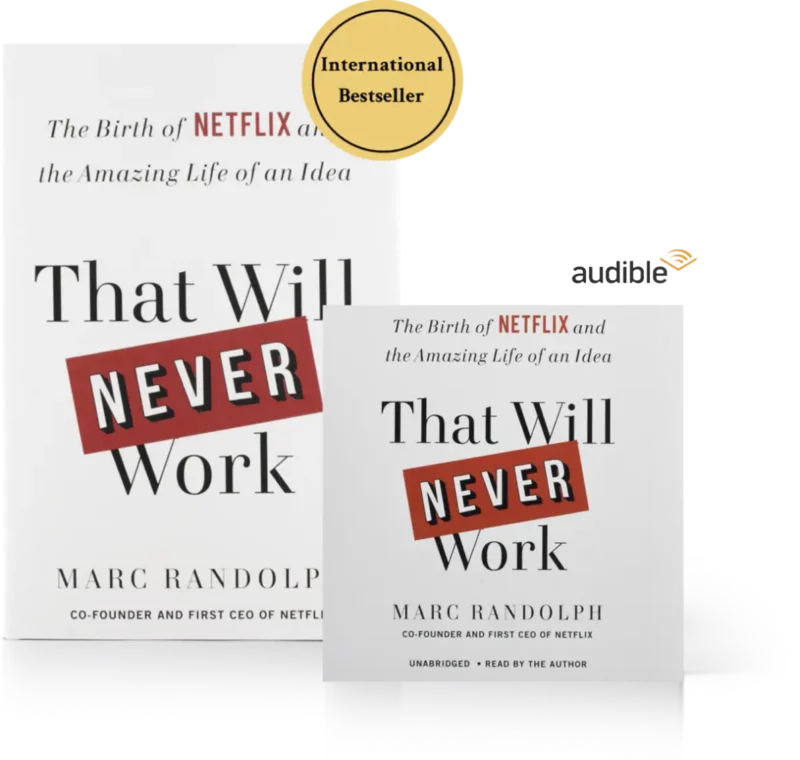Why We Kept the Original Netflix DVDs in a Safe.
Don’t just automate. Innovate.

Earlier this year, Amazon announced that it was opening up forty-six of its fulfillment centers to the public for twice-a-day tours.
For years, Prime members have been getting practically anything they want delivered to them within twenty-four hours. Now they get to peek behind the football-field-sized curtain to see exactly how one-click-shopping works: A.I., robots, and humans working in harmony, in buildings the size of airplane hangars.
Now, I love a good factory tour. Drop me into a bottling plant, an automotive assembly line, or a jellybean factory, and I’m happy as a clam at high tide. Some of my fondest memories of the early years of Netflix have to do with our efforts to figure out the most efficient, effective, and fast methods to get DVDs to people all over the country.
But want to know what we figured out back in the year 2000?
Hint: It wasn’t robots.
It was a bunch of people. A big room. And a whole bunch of flimsy card tables.
In 1997, when Netflix was just starting, we didn’t have the money for robots. And frankly, neither did Amazon. When I first met Jeff Bezos back in the late 90s, the only automated thing in his office was a rotating fan, gently blowing across a pair of identical blue shirts he’d hung on a water pipe behind his desk.
Even in 1998, a few months after we launched the site, there wasn’t really much to automate. Our first warehouse was an old walk-in safe that happened to come with our first office in Scotts Valley. And with less than a thousand DVD titles available, and a busy day consisting of twenty to thirty shipments, it wasn’t too hard to stay organized.
But a few years later, once we rolled out our no-due-date no-late-fees programs, things really took off. Pretty soon, we had 250,000 subscribers. And by then there were nearly 10,000 different DVD titles to keep track of. Now we were busy.
We had long since outgrown the safe, and now leased space in a nondescript office park in San Jose. But it was still pretty low-tech. If we had offered twice-a-day tours to the public, people would have seen the polar opposite of what happens in an Amazon Center:
Everything — and I mean everything — was done by hand. We didn’t even have one of those roller systems for moving things from one place to the other. And perhaps the most surprising thing about this? It was on purpose.
By then, Netflix did have the money to automate — but even when the technology, although still pretty primitive, existed — we held off. We stuck to our guns: people in a room, working together to open envelopes, stick DVDs in them, print labels, and sort everything for mailing.
It wasn’t because we were Luddites, afraid of progress and change. In fact, we once spent $120,000 on a fancy mail sorting machine. We used it approximately twenty times before shelving it in a warehouse somewhere, where it became the world’s most expensive monument to misguided machination.
We stuck with people over machines because automation is antithetical to what a startup is.
Perhaps a definition is in order. A startup, broadly defined, is a group of people searching for a repeatable, scalable business model.
Machines are great at the last parts of that definition: repeating and scaling up. They will do exactly what you tell them to do — forever.
But a machine can’t help you search. In fact, it does exactly the opposite, by locking you in to a specific way of doing things. And in a startup, you don’t always know what you want at the outset. You have to search, to try new things. You have to experiment.
With people, if you see something you want to change, you can make the change immediately. And if that doesn’t work, you can change it again half an hour later. You can’t do that with a robot. They’re terrible at experimenting.
Let’s say that my startup wants to sell a forty-cent hamburger. I know that the only way to do it is to completely automate the entire process, so that costs are low and waste is negligible. But before I build the robot, I have to figure out so many things — mainly, what is the best way to make a forty-cent burger in the first place? Where does the cheese go? Does the ketchup go on the top bun or the bottom? To what temperature do we need to cook the patty? How thick should the pickles be?
Before you build a robot to cook a burger the exact same way over and over again, you better be pretty sure exactly what kind of burger you want. Or, put more simply:
Before you automate, you have to innovate. You have to make sure that your idea isn’t just repeatable and scalable — but that it’s an idea that people actually care about.
Case in point: In the early 2000s, Mitch Lowe and I got interested in kiosks. The fastest a Netflix user could get a DVD in the mail was two days, and we thought that installing automated kiosks with a limited selection of new releases at high-traffic areas like supermarkets could make the process of renting a DVD close to instant — without necessitating a trip to the video store.
(You might recognize this idea. After Netflix, Mitch would go on to found Redbox.)
We went out to Vegas to test the idea, and installed a trial kiosk in a supermarket off the strip. But we never built the actual kiosk. We just set up counter in a little alcove just past the checkout stations and manned it ourselves.
You can read about this process in my book. But the long and short of it is that we didn’t need to know how a computerized kiosk would work — we wanted to know how it should work. How people would react if given the opportunity to rent new releases while they were shopping for toilet paper.
We didn’t need to know if we could make ten thousand hamburgers and sell them for forty cents each. We needed to know if people were hungry — and for what.
The bottom line is that you can always figure out how to scale an idea up and repeat it. But building a robot will never tell you if people care. Nine times out of ten, startups automate too soon — before they’ve really figured out who they are and what they’re trying to do.
My advice? At least at the beginning, leave automation to the Amazons of the world. Figure out what you want to do, then spend a long time — ideally with a group of really brilliant people — figuring out exactly how to do it. Experiment. Leave room for chance. Give yourself room to fail. Then fix those failures.
You can automate later. Focus on innovating. And if you really feel the automation itch, just make an appointment for an Amazon tour. I hear tickets go fast.
RECOMMENDED FOR YOU
Want to Make Things Easy for Your Team?
Podcast Episode 72
Is it a Culture Problem or a Hiring Problem?
October 25, 2022 • 38 min
